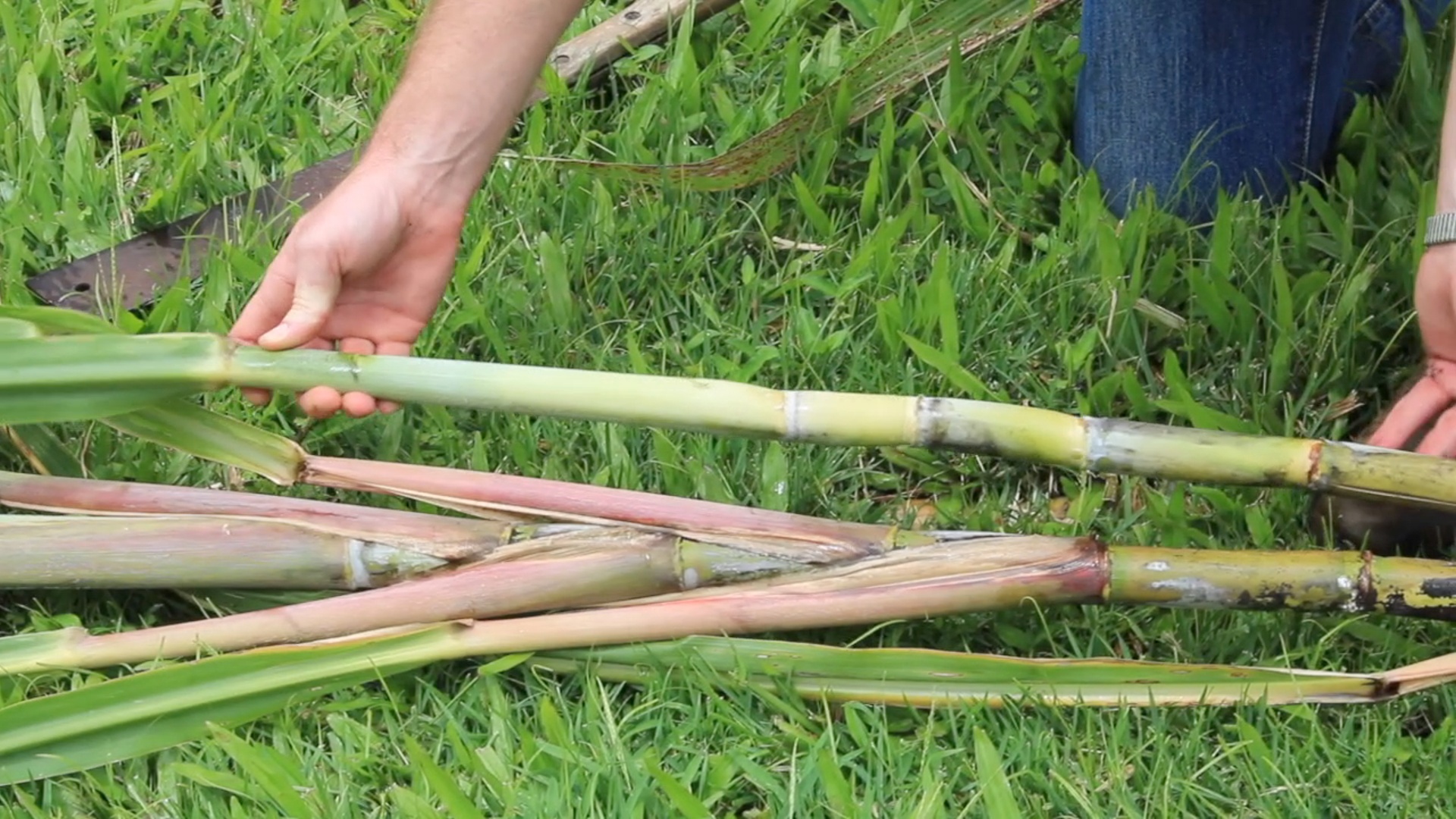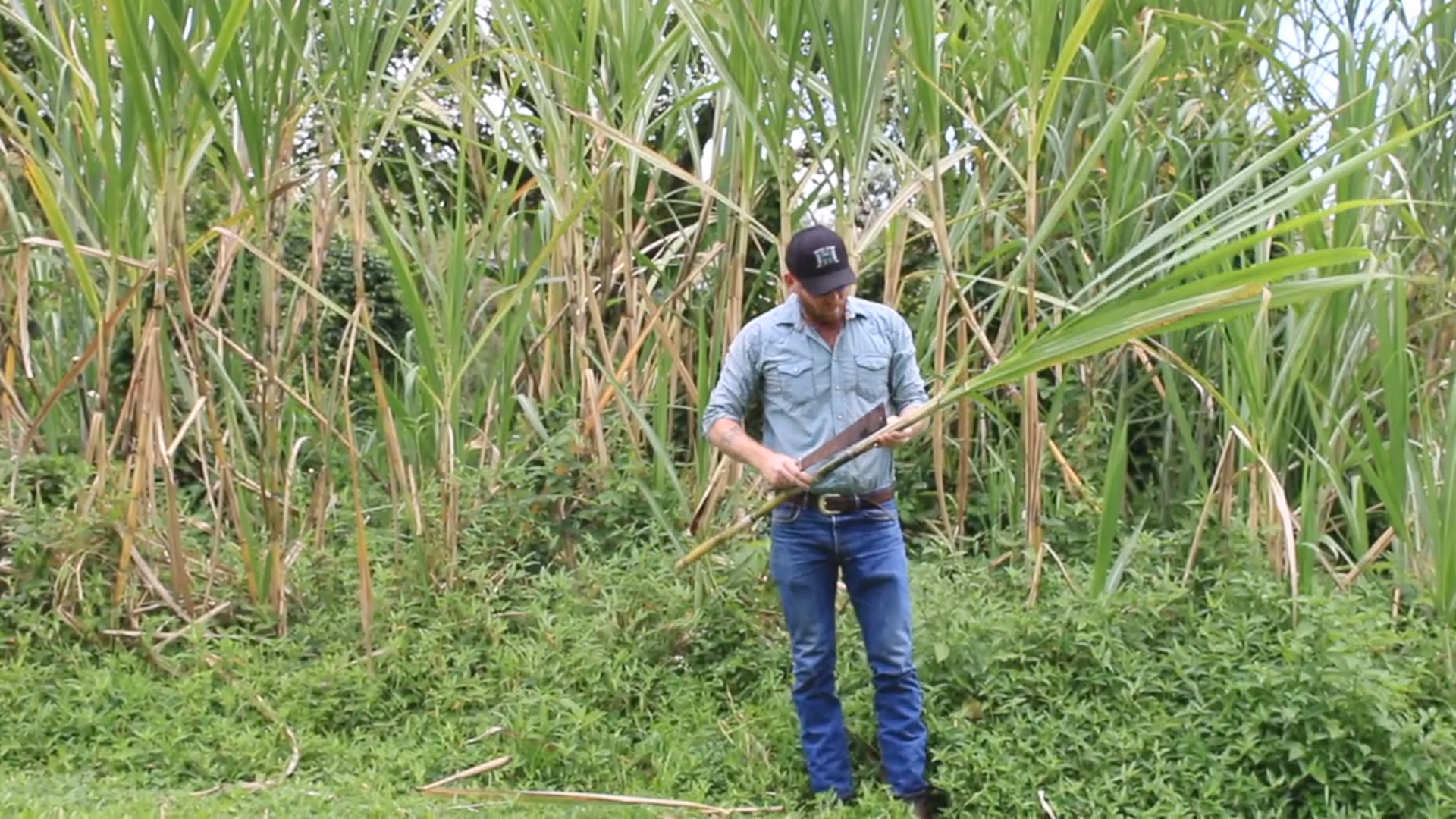(BIVN) – Researchers with the University of Hawaiʻi at Hilo are looking into whether sugarcane can make jet fuel. In a recent news release, the university said field trials began in February at UH-Hilo’s Agricultural Farm Laboratory in Panaʻewa.
“We have really rich sugarcane history all throughout all the Hawaiian islands but looking at it through this lens really provides a whole lot of extra opportunity that we didn’t really have before,” said UH-Hilo instructor Nick Krueger in a video provided by the university. “It’s a completely different experience to be able to physically touch components of a scientific study and not read about some layout of experimental units in a scientific journal paper.”
From UH-Hilo:
A groundbreaking study investigating the growth of selected varieties of sugarcane to convert into high-performance jet fuel is underway at the University of Hawai‘i at Hilo College of Agriculture, Forestry, and Natural Resource Management (CAFNRM). Utilizing advanced technologies in agronomics and bioeconomy, the researchers are ultimately looking to improve the island’s environmental sustainability, build a stronger economy and create educational opportunities for students.
“The aviation industry recognizes that bio-based or sustainable aviation fuels are essential to the future of aviation,” said CAFNRM Dean Bruce Mathews, a principal investigator on the project. “Fully one-half of the industry’s greenhouse gas reduction goals for 2050 can only be achieved via sustainable jet fuels. Electric airplanes are only feasible for small planes on short-distance flights and the only electric airplane under development that has substantial range is a hybrid that still requires liquid fuel.”
Field trials growing different varieties of sugarcane at the UH Hilo Agricultural Farm Laboratory in Pana‘ewa began in February, with support from the U.S. Department of Agriculture’s Daniel K. Inouye U.S. Pacific Basin Agricultural Research Center in Hilo.
The study includes testing modern commercial sugarcane varieties (interspecific hybrids of Saccharum spp.) H68-1158 and H78-0292. Large pot studies are also being conducted to evaluate the nutrient use efficiencies of the selected sugarcane under marginal soil fertility in comparison with an early 1900s variety.
The project is a collaboration between the CAFNRM and the Joint BioEnergy Institute (JBEI) in California, one of four regional U.S. Department of Energy-funded Bioenergy Research Centers.
Why sugarcane?
Peter Matlock of JBEI, is also serving as CAFNRM’s bioeconomy research and commercialization specialist. Matlock, a strategic advisor for aviation fuels, said sugarcane was selected as the crop of focus because it is a tremendously prolific biomass (plant material) producer.
Traditionally, the commercial industry has accessed only the sucrose from the plant, which continues to serve as a foundation for the world’s sugar industry. But when growing sugarcane solely for sugar, the rest of the crop, specifically major plant biomass components known as lignin, cellulose and hemicellulose, normally go to waste. The conventional practice of burning sugarcane prior to harvest is to eliminate extra biomass material that previously had limited value, and residual biomass left over after sucrose extraction is typically burned to make power. Converting this biomass into high-valued products such as high performance jet fuel generates more revenue from the same plant material and eliminates incentives to burn crops—reducing air pollution as a bonus.
“The interesting thing is if we can take the rest of the plant and break it apart, we’d also have yummy digestible bits that can be fed into microbes to make our end products,” Matlock explained. The end product he mentioned would be the conversion of sugarcane into biofuel for aviation use. This fermentation process is much more ideal than traditional chemical synthesis, which often involves high heat and high pressure to force a reaction.
UH Hilo instructor Nick Krueger is coordinating the field trials at the university’s farm. Krueger explained a majority of the South Pacific relies on imported petroleum products, and this research could help reduce dependence by identifying a crop that could produce fuel, while also supporting farmers in Hawai‘i. The varieties of energycane (sugarcane grown for bioenergy) used in the study were developed shortly before the fall of Hawai‘i’s sugar industry, and the best agronomic practices for their most sustainable production have not yet been identified.
CAFNRM appointed UH Hilo academic support specialist Jake Rodrique to help oversee the sugarcane study on site at the farm and to regularly integrate students into field activities.
“It’s a completely different experience for students to be able to physically touch components of a scientific study instead of reading about some layout of experimental units in a scientific journal paper,” Krueger explained.
Sustainable farming
During the trials, there will be no tilling or plowing to minimize the amount of carbon dioxide emitted into the atmosphere and reduce final costs. The goal is to reduce subsequent fertilizer applications even through multiple harvests. Researchers will also measure carbon storage in the soil in an effort to reduce greenhouse gas emissions. One of the sugarcane varieties has a particularly vigorous root system which should help retain storage levels.
“The objective is to show that we can grow substantial amounts of cane biomass under these environmentally-friendly conditions with carbon storage in the soil,” explained Matlock. He hopes emerging carbon credit markets could provide an additional revenue source for farmers.
Three-tier plan
The initial field trials are the first level of a three-tier plan. Information will be shared through training sessions and hands-on demonstrations within the community.
The focus of the second tier is educational tourism, attracting students from across the globe to work on biotech projects exclusively in Hawai‘i. Actual production in Hawaiʻi makes up the last tier, which Matlock said will involve state policy.
“We know the science is sound and the fundamental assumptions are reasonable,” said Matlock. “This is a good thing to do for the island and the world.”



by Big Island Video News6:40 am
on at
STORY SUMMARY
PANAʻEWA, Hawaiʻi - UH is looking at varieties of sugarcane to convert into high-performance jet fuel at the UH-Hilo College of Agriculture, Forestry, and Natural Resource Management.